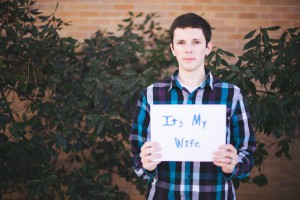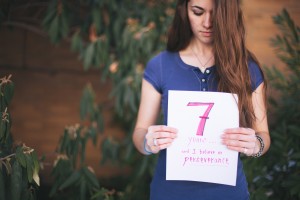Jaime Nielsen was the tallest fifth grader and just wanted to stop growing so she would fit in with her class. She realized that she could slim her body by eating less and exercising more.
Nielsen, now a pre-communications freshman, struggled with an eating disorder for 10 years before she was sent to a treatment facility. Her eating disorder hit a critical point after a party. After the party she purged, getting rid of all those calories. For the first time, she saw blood in her vomit and it scared her.
She told a friend, who told her family. Nielsen’s parents confronted her after hearing the disturbing news. She was upset by their concern, but the words they used wouldn’t leave her alone.
“I looked in the mirror and said the words ‘eating disorder,’” Nielsen said. “I was thinking it in my head, and looking at myself, and I just was like, ‘Yeah right. An eating disorder is someone who is 60 pounds.'”

During treatment, she accepted that she had an eating disorder and that it was ruining her life. Although her treatment was successful, Nielsen says the eating disorder will be with her for life.
“It’s still so much in my head,” Nielsen said. “So it’s hard to say I’m recovered. I don’t know if anyone can say that. For me, I am on the road, the never-ending road, of recovery.”
Her situation is not unusual. The South Carolina Department of Health estimates that 7 million women and 1 million men struggle with eating disorders. Nielsen said high-risk times for developing an eating disorder are at puberty, starting college (or moving away from home) or after marriage.
When Andy Johnson, a junior from Sandy majoring in electrical engineering, got married he knew his wife had battled an eating disorder as a teen but had since gone to college and served a mission. She seemed to be handling the disorder well, but it resurfaced shortly after their wedding.
Johnson advises acting on the issue as soon as possible. People struggling with eating disorders become obsessed with keeping their secret.

Nielsen sees now how the disorder affected her ability to enjoy life.
“It totally numbed me out,” Nielsen said. “I was convinced that I didn’t have feelings for a very long time, and I was scared if I didn’t have the eating disorder that I would start to feel. … That scared me because I didn’t know how to handle emotions.”
When Nielsen was sent to a treatment facility, she was skeptical about the program, but after five months she had a breakthrough.
“Literally one day it just clicked,” Nielsen said. “I felt like I let go a bit in my head and unleashed, broke the chains, a bit. Wow, I really felt myself. I (thought), ‘This is amazing. People feel like this? This is how people feel? This feels so good.’ After being trapped for so long, that’s how I felt. And I was just ready to deal with it.”
It has now been two years and two months since Nielsen was discharged from the treatment facility. She still visits with a therapist regularly and deals with her eating disorder on a daily basis, but she is enjoying her new life.
Nielsen now mentors other students through the Women’s Services and Resources office and meets others who deal with the same problem.
Johnson also helps out in the WSR offices to raise awareness about eating disorders among both men and women.
While the signs vary by person, Johnson said signs to look for are excess time in the bathroom, a drop in energy and a change in eating habits. Johnson said it took six months before he and his wife finally talked about the issue.
“If you suspect that there might be a problem with a loved one, or even yourself, the best course of action I could tell you to do is talk to someone who knows a little bit,” Johnson said. “Talk to me (or) talk to the Women’s Resource Center here on campus at BYU.”
Eating disorders not only affect the lives of those who struggle with the disorder, but also the lives of their loved ones. Johnson described it as a “black hole” that consumes relationships, time and money with the lives it hurts. However, through treatment there is hope.
“It does get better, it does,” Johnson said. “There is hope. This is not a sprint: it’s a marathon. I would have been a lot easier on myself if I had understood that this is a long-term treatment, a long-term trial.”
The Women’s Services and Resources office is available to assist anyone who wants to talk about eating disorders or other issues. More information can be found on their website wsr.byu.edu.




